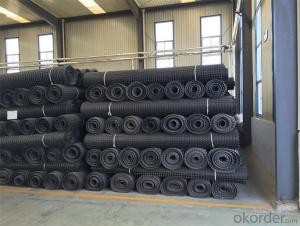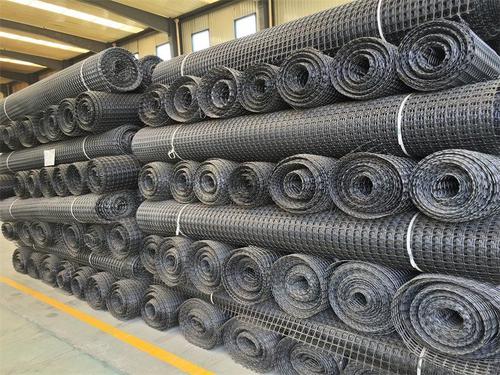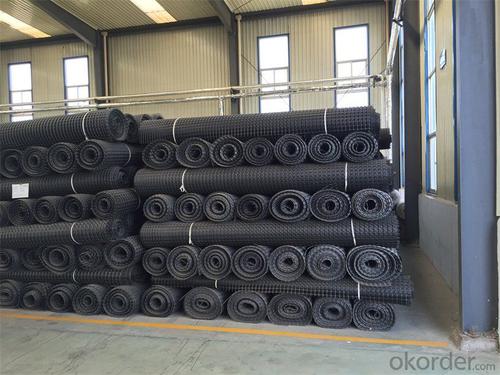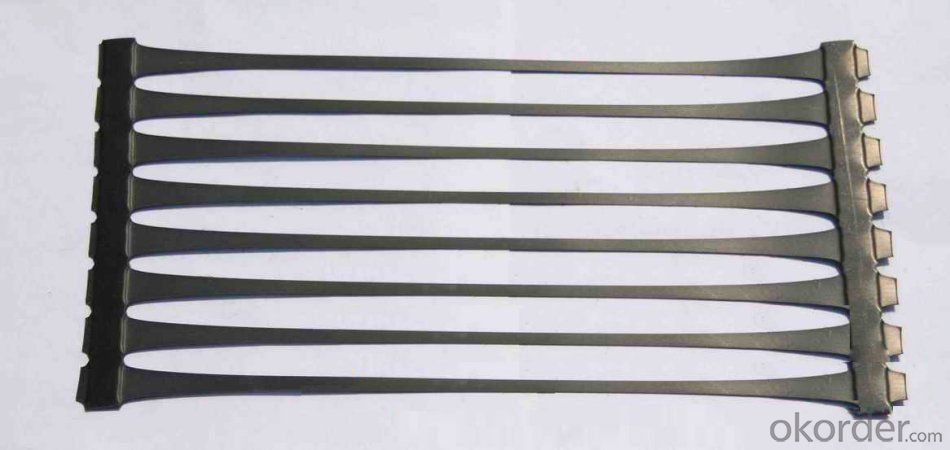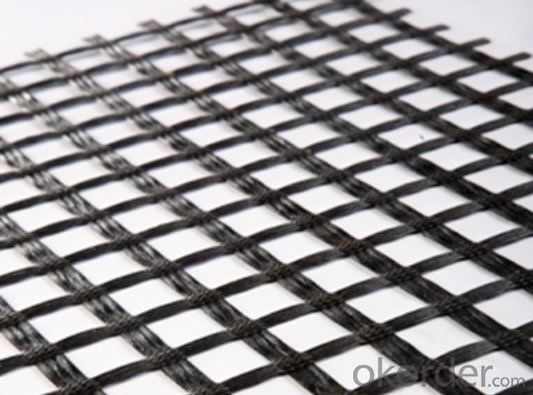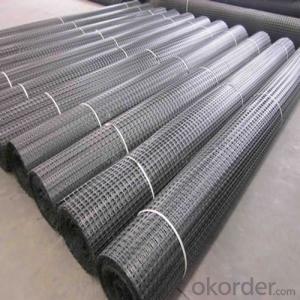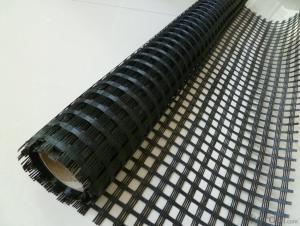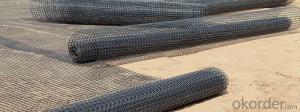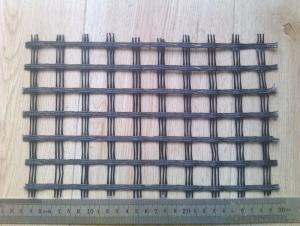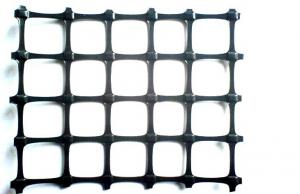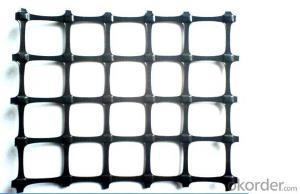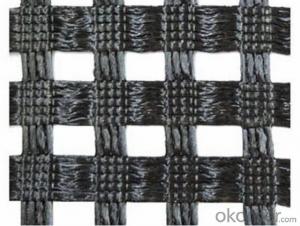Tenax Uniaxial Geogrids with Low Elongation and Good Toughness for Civil Engineering Construction
- Loading Port:
- China main port
- Payment Terms:
- TT OR LC
- Min Order Qty:
- 1000 m²
- Supply Capability:
- 10000000 m²/month
OKorder Service Pledge
OKorder Financial Service
You Might Also Like

Introduction
Geogrid is widely used in civil construction over the whole world. It is manufactured on the basis of high-impact polyethylene and polypropylene. Geogrids are used as reinforcement materials on mellow soils for railway and car roads, parking places, landing grounds and for the reinforcement of bridge piers, slopes and earth banks, for erosion protection of slopes.
Material Major Advantages
Geogrid application is a way of soil reinforcement, On soil surface a plate is created according to the thickness of a corresponding geogrid: 50 mm, 100 mm, 150 mm, 200 mm (this standard range of products is manufactured by “Technostroytex” LLC).
Functioning principle: adhesion of grain material with grid meshes. This jamming causes resistance to horizontal soil displacement. Thus, it mobilizes bearing resistance of soft soils.
Our Service
Quality assurance
1.On a regular basis or as per your request,we entrust national testing agencies to conduct quality inspections
2. Strictly in accordance with the ISO9001-2008 international quality system standard,we monitor and manage the whole process throughout production,quality testing,and measurement to ensure product quality
3. For quality-related construction delay or substandard construction(except for damage or losses due to customer’s responsibility or irresistible natural disasters),we have refunding,replacement,and repair services.We will respond to customers’ feedbacks on quality issues within 24 hours.
Packaging & Shipping
Packing: PLASTIC FILM INSIDE, AND WOVEN BAG OUTSIDE
Shipping: About 15 days after receipt the deposit
FAQ:
Q: What kind of payments does jenor support?
A: T/T, L/C, Cash are accepted.
Q: Do you charge for the samples?
A: Accordeing to our company policy, the samples are free, we only charge the freight fee. And we will return the freight fee during the next order.
Q: Can you produce according to customers' design?
A: Sure, we are professional manufacturer, OEM and ODM are both welcome.
Q: Do you have other products?
A: Yes, please check the pictures:
- Q: Can geogrids be used in reinforcement of concrete structures?
- Yes, geogrids can be used in the reinforcement of concrete structures. Geogrids are commonly used as a reinforcing material in civil engineering projects, including the reinforcement of concrete structures such as retaining walls, bridge abutments, and road pavements. They help to distribute and enhance the load-bearing capacity of the concrete, improve its stability, and reduce the risk of cracking or structural failure.
- Q: Can geogrids be used in mining applications?
- Yes, geogrids can be used in mining applications. Geogrids are a type of geosynthetic material that are commonly used in civil engineering and construction projects to reinforce soil and provide stability. In mining applications, geogrids can be used to strengthen and stabilize the ground, prevent soil erosion, and provide support to mining infrastructure such as haul roads and tailings dams. By improving the structural integrity of the ground, geogrids can contribute to safer and more efficient mining operations.
- Q: What are the advantages of using geogrids in ground improvement for seismic stability?
- Geogrids offer several advantages when used in ground improvement for seismic stability. Firstly, they provide increased strength and stability to the soil, enhancing its ability to withstand seismic forces. Geogrids can effectively distribute and dissipate the energy generated during an earthquake, reducing the risk of soil liquefaction and ground failures. Additionally, geogrids can improve the bearing capacity of the soil, allowing it to support heavier loads without experiencing settlement or failure. Furthermore, geogrids are easy to install and cost-effective compared to other ground improvement techniques, making them a viable solution for seismic stability in various construction projects.
- Q: How to calculate the amount of geogrid works under what circumstances need to lay geogrid
- According to the road area, [136] asphalt pavement often laying geogrid [0772], [6164] but if the asphalt is thin, can not. Also like municipal roads will generally be used.
- Q: Glass fiber grating with large pulling force for Expressway
- Fiberglass geogrid is mainly used for old road reconstruction, the main purpose is to reduce reflection cracks.
- Q: Are geogrids effective in reducing soil settlement?
- Yes, geogrids are effective in reducing soil settlement. They provide reinforcement and stabilization to the soil, preventing excessive settlement and maintaining the integrity of the ground. By distributing the load and increasing the load-bearing capacity of the soil, geogrids help to minimize settlement and ensure long-term stability.
- Q: Are geogrids suitable for use in ground reinforcement for agricultural facilities?
- Yes, geogrids are suitable for use in ground reinforcement for agricultural facilities. Geogrids provide excellent soil stabilization, erosion control, and load-bearing capacity, making them effective in preventing soil compaction, improving drainage, and supporting heavy machinery used in agricultural operations. Moreover, geogrids are resistant to weathering and have a long lifespan, making them a reliable choice for long-term use in agricultural facilities.
- Q: Are geogrids suitable for use in ground reinforcement for residential developments?
- Yes, geogrids are suitable for use in ground reinforcement for residential developments. They provide excellent soil stabilization and reinforcement, helping to prevent soil erosion, improve load-bearing capacity, and enhance the longevity of residential structures. Geogrids are a cost-effective and sustainable solution for various ground reinforcement applications, making them a suitable choice for residential developments.
- Q: How do geogrids help in reducing construction equipment requirements?
- Geogrids help in reducing construction equipment requirements by providing reinforcement and stability to the soil. This means that less heavy machinery is needed to compact and stabilize the ground, resulting in cost savings and more efficient construction processes. Geogrids distribute the load evenly, prevent soil erosion, and improve soil bearing capacity, reducing the need for extensive excavation and grading work.
- Q: Are geogrids resistant to moisture absorption?
- Yes, geogrids are generally resistant to moisture absorption.
Send your message to us
Tenax Uniaxial Geogrids with Low Elongation and Good Toughness for Civil Engineering Construction
- Loading Port:
- China main port
- Payment Terms:
- TT OR LC
- Min Order Qty:
- 1000 m²
- Supply Capability:
- 10000000 m²/month
OKorder Service Pledge
OKorder Financial Service
Similar products
Hot products
Hot Searches
Related keywords


